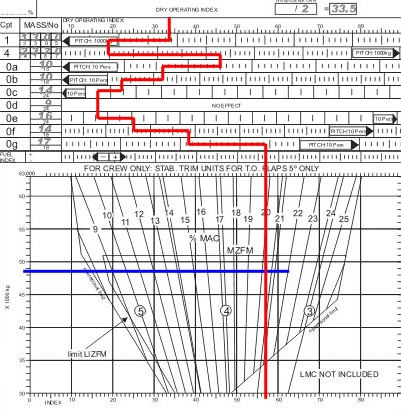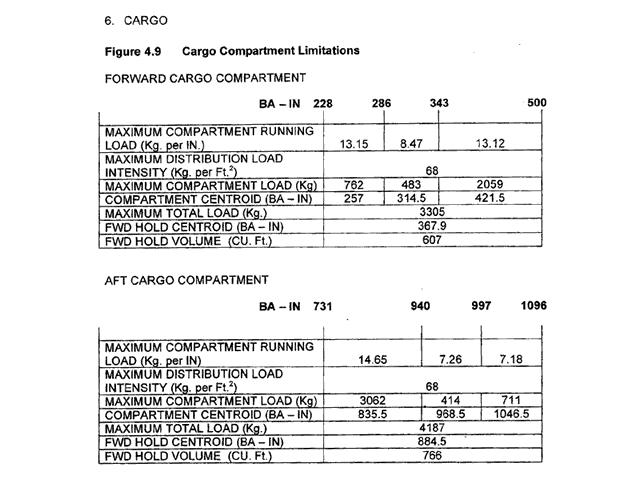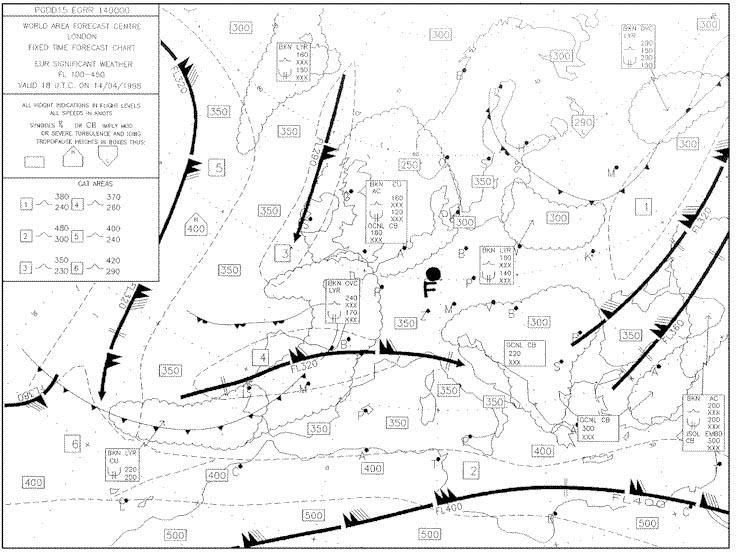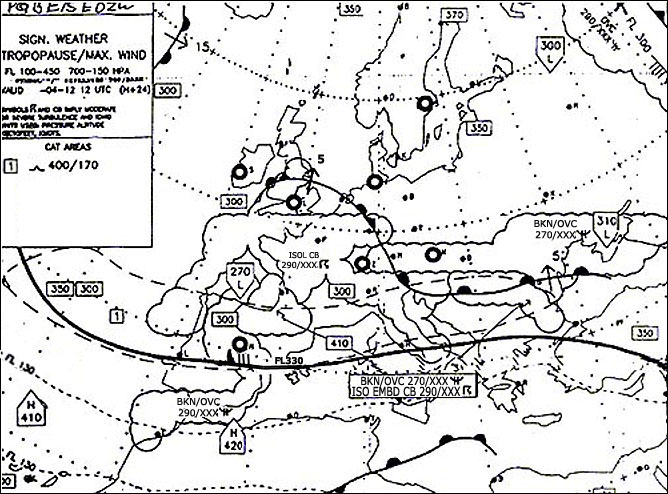The primary flight display pfd of an efis equipped aircraft displays the ? [ Control visibility ]
Question 64-1 : 1 2 3 4 5 2 5 1 2 3 5 3 4
 1, 2, 3, 4, 5.
1, 2, 3, 4, 5. When two waypoints are entered on the fms flight plan page a track between the ?
Question 64-2 : A great circle arc a rhumb line two great circle arcs joined by a straight segment two rhumb lines joined by a straight segment
 A great circle arc.
A great circle arc. According to cs25 concerning the electronic display systems the green colour is ?
Question 64-3 : Engaged mode armed mode advisory status
 Engaged mode.
Engaged mode. The primary flight display pfd of an efis equipped aircraft can display ?
Question 64-4 : Altitude capture tcas resolution advisory autopilot and flight director mode changes altitude capture braking system autopilot and flight director mode changes low engine oil pressure terrain alerts windshear detection pressurization failure altitude capture tcas resolution advisory
 Altitude capture, tcas resolution advisory, autopilot and flight director mode changes.
Altitude capture, tcas resolution advisory, autopilot and flight director mode changes. According to amc 25 11 concerning the electronic display systems when exceeding ?
Question 64-5 : Red amber yellow magenta
The primary flight display pfd of an efis equipped aircraft displays the ?
Question 64-6 : Ias attitude altitude heading attitude heading altitude systems information altitude attitude heading engine parameters attitude heading ias navigation map in plan layout mode
 Ias, attitude, altitude, heading.
Ias, attitude, altitude, heading. The navigation display nd of an efis equipped aircraft can display the ?
Question 64-7 : Flight plan weather radar terrain map intruding traffics flight plan engine failure navaids resolution advisories terrain map navaid bearings flight director active modes intruding traffics altitude autopilot active modes weather radar
An efis includes the following components ?
Question 64-8 : Symbol generator display unit s control panel fms symbol generator display unit s display unit s only adc inertial navigation computer display unit s
 Symbol generator, display unit(s), control panel.
Symbol generator, display unit(s), control panel. According to amc 25 11 concerning the electronic display systems the colour ?
Question 64-9 : White or cyan green yellow magenta
 White or cyan.
White or cyan. The navigation display nd modes can be . 1 arc or map covering 45 degrees on ?
Question 64-10 : 1 2 3 1 2 1 3 2 3
 1, 2, 3.
1, 2, 3. On the navigation display nd of an efis equipped aircraft the colours used are ?
Question 64-11 : Magenta or white for the active waypoint to waypoint green for light precipitation magenta or red for the active waypoint to waypoint amber for medium precipitation white or blue for the active waypoint to waypoint red for medium precipitation amber or white for the active waypoint to waypoint yellow for high precipitation
 Magenta or white for the active waypoint (to waypoint), green for light precipitation.
Magenta or white for the active waypoint (to waypoint), green for light precipitation. According to cs25 concerning the electronic display systems the colours used are ?
Question 64-12 : Red for flight enveloppe and system limits green for autopilot or flight director engaged modes red for warnings magenta for autopilot or flight director engaged modes red for caution abnormal sources white for flight enveloppe limits amber for the system limits white for autopilot or flight director engaged modes
 Red for flight enveloppe and system limits, green for autopilot or flight director engaged modes.
Red for flight enveloppe and system limits, green for autopilot or flight director engaged modes. According to cs25 concerning the electronic display systems the colour ?
Question 64-13 : Amber or yellow red white magenta
 Amber or yellow.
Amber or yellow. The sideslip indication diplayed on the pfd primary flight display is generated ?
Question 64-14 : The inertial system the automatic flight control system afcs the yaw damper the stall protection system
 The inertial system.
The inertial system. On a electronic flight instrument systems efis the following egt parameters may ?
Question 64-15 : 1 3 4 1 4 1 2 3 4 1 2 3
 1, 3, 4.
1, 3, 4. The following information can be displayed on the navigation display nd with ?
Question 64-16 : 1 2 3 2 3 4 1 2 3 4 1 4 5
 1, 2, 3.
1, 2, 3. On an electronic flight instrument system efis the following fuel data may be ?
Question 64-17 : 2 3 4 1 2 3 2 3 1 2 3 4
 2, 3, 4.
2, 3, 4. The following information can be displayed on a primary flight display pfd .1 ?
Question 64-18 : 1 2 3 4 1 2 4 5 1 2 5 1 3 5
 1, 2, 3, 4.
1, 2, 3, 4. The following information can be displayed on a primary flight display pfd .1 ?
Question 64-19 : 1 2 4 5 1 2 3 4 5 1 5 2 3 4
 1, 2, 4, 5.
1, 2, 4, 5. The following information can be displayed on a primary flight display pfd .1 ?
Question 64-20 : 2 3 4 5 1 2 3 4 5 1 3 4 5 2 4 5
 2, 3, 4, 5.
2, 3, 4, 5. The following information can be displayed on the navigation display nd with ?
Question 64-21 : 1 3 4 5 2 3 4 1 2 3 1 4 5
 1, 3, 4, 5.
1, 3, 4, 5. On an electronic flight instrument system efis the following egt parameters ?
Question 64-22 : 1 2 3 4 1 2 3 2 3 4 1 4
 1, 2, 3, 4.
1, 2, 3, 4. What can be interpreted from the flight path vector fpv ?
Question 64-23 : Glide angle speed trend pitch reference for resolution advisory ra intruder traffic with excessive vertical speed
 Glide angle.
Glide angle. Except for airplanes under 5 7 t airworthiness certificate of which is ?
Question 64-24 : 25 hours 30 minutes 60 minutes 10 hours
 25 hours.
25 hours. The cvr cockpit voice recorder includes .1 a microphone.2 a recorder in ?
Question 64-25 : 1 2 2 4 1 2 3 4 1 4
 1, 2.
1, 2. On a modern transport category aeroplane the engagement of the automatic pilot ?
Question 64-26 : The pfd primary flight display the nd navigation display the ecam electronic centralized aircraft monitoring left screen the nd navigation display of the pilot in command
 The pfd (primary flight display).
The pfd (primary flight display). According to cs25 a cvr cockpit voice recorder must record . 1 communications ?
Question 64-27 : 1 2 3 4 1 2 2 4 1 3
 1, 2, 3, 4.
1, 2, 3, 4. The purpose of the flight data recorder fdr is to record specific parameters ?
Question 64-28 : 1 2 4 1 2 3 4 2 3 1 2
 1, 2, 4.
1, 2, 4. The purpose of the flight data recorder fdr is to record specific parameters ?
Question 64-29 : 1 2 3 4 2 3 4 2 3 1 2 3
 1, 2, 3, 4.
1, 2, 3, 4. The purpose of the cockpit voice recorder cvr is to record .1 communications ?
Question 64-30 : 1 2 1 3 1 3
 1, 2.
1, 2. The purpose of the cockpit voice recorder cvr is to record .1 the audio ?
Question 64-31 : 1 3 1 2 3 1 2 3
 1, 3.
1, 3. When pressing the push button event on the unit control of a flight data ?
Question 64-32 : A mark is set on the recording enabling this event to be found rapidly at a subsequent analysis the recording is stopped during one minute it erases the last minute recorded it records the flight data for 10 minutes
 A mark is set on the recording, enabling this event to be found rapidly at a subsequent analysis.
A mark is set on the recording, enabling this event to be found rapidly at a subsequent analysis. Regarding the operating system used for an on board documentation charts and ?
Question 64-33 : There are no certificate requirements the certification requirements are detailed in easa air ops the certification requirements are detailed in cs 23/25 the certification requirements are detailed in eurocae standards
 There are no certificate requirements.
There are no certificate requirements. In computing what is the function of a control unit ?
Question 64-34 : It ensures sequencing and co ordination of operations it performs complex arithmetic operations it performs simple arithmetic operations it is a user/computer interface
 It ensures sequencing and co-ordination of operations.
It ensures sequencing and co-ordination of operations. The central processing unit cpu of a computer essentially consists of .1 an ?
Question 64-35 : 1 2 3 2 3 1 1 3
 1, 2, 3.
1, 2, 3. Regarding computer design architecture identify whether the following ?
Question 64-36 : 1 is correct and 2 is incorrect 1 and 2 are incorrect 1 is incorrect and 2 is correct 1 and 2 are correct
 1 is correct and 2 is incorrect.
1 is correct and 2 is incorrect. Which of these statements about computer architecture are correct or incorrect ?
Question 64-37 : 1 is correct and 2 is incorrect 1 and 2 are incorrect 1 is incorrect and 2 is correct 1 and 2 are correct
 1 is correct and 2 is incorrect.
1 is correct and 2 is incorrect. The software used to run the atsu application atc and aoc ?
Question 64-38 : Is certified according to an equipment certification standard ed12b do178b is only approved and tested by the manufacture only approved and tested by the company is certified according to cs25/cs29
 Is certified according to an equipment certification standard (ed12b, do178b).
Is certified according to an equipment certification standard (ed12b, do178b). Which document deals with considerations of software use in on board aircraft ?
Question 64-39 : Rtca/do 178b eurocae doc 178 jar 17 ec directive 485/2002
 Rtca/do-178b
Rtca/do-178b Which of these statements about computer architecture are correct or incorrect ?
Question 64-40 : 1 is incorrect 2 is incorrect 1 is correct 2 is correct 1 is incorrect 2 is correct 1 is correct 2 is incorrect
 1 is incorrect, 2 is incorrect.
1 is incorrect, 2 is incorrect. ~
Exclusive rights reserved. Reproduction prohibited under penalty of prosecution.
2519 Free Training Exam
